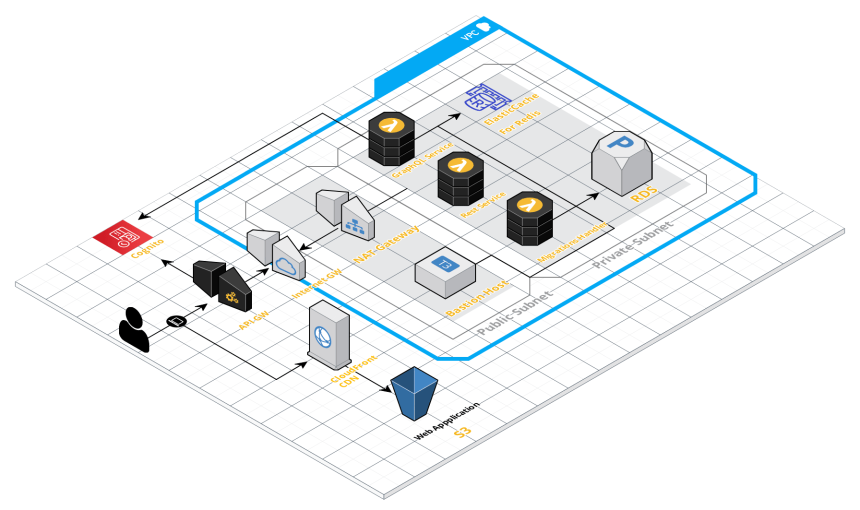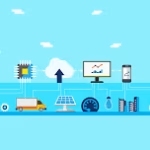In the digital age, security is a top priority for any technology stack, and serverless computing is no exception. While serverless architecture offers many benefits such as cost efficiency and scalability, it also introduces unique security challenges. Protecting serverless applications requires a thoughtful approach to security, addressing vulnerabilities specific to serverless environments and integrating best practices to safeguard against threats. Here’s a comprehensive guide to securing your serverless environment and ensuring robust protection for your serverless applications.
Traditional Security Challenges
Traditional security practices are often centered around securing physical or virtual servers, networks, and databases. These practices involve:
- Network Security: Implementing firewalls, intrusion detection systems, and network segmentation to protect against unauthorized access and cyberattacks.
- Server Hardening: Configuring servers to reduce vulnerabilities, applying security patches, and managing server configurations to prevent exploitation.
- Data Encryption: Protecting data at rest and in transit through encryption protocols and secure storage solutions.
However, serverless architecture shifts these responsibilities to the cloud provider, altering the security landscape and necessitating a different approach to protection.
Key Security Considerations in Serverless Architecture
1. Understanding the Shared Responsibility Model
In a serverless environment, security responsibilities are shared between the cloud provider and the customer. Understanding this shared responsibility model is crucial for implementing effective security measures.
- Provider Responsibilities: The cloud provider manages the security of the underlying infrastructure, including hardware, software, and network components. This includes ensuring the availability, integrity, and confidentiality of the serverless platform itself.
- Customer Responsibilities: The customer is responsible for securing the application code, data, and configurations. This includes managing access controls, securing APIs, and implementing application-level security measures.
For example, while AWS Lambda handles the security of the underlying infrastructure, customers need to ensure their Lambda functions are secure by applying best practices in coding and configuration.
2. Implementing Least Privilege Access
Applying the principle of least privilege is essential for minimizing security risks in serverless environments. This principle involves granting the minimum level of access necessary for functions to perform their tasks.
- Role-Based Access Control (RBAC): Use RBAC to define roles and permissions for different functions or services. Ensure that each function has only the permissions it needs to execute and nothing more.
- Fine-Grained Permissions: For cloud services and resources, apply fine-grained permissions to limit access based on the specific needs of the function. Avoid using overly permissive roles or broad access policies.
For example, if a serverless function only needs to read data from a database, grant it read-only permissions rather than full access to the database.
3. Securing APIs and Endpoints
APIs are often a key component of serverless applications, and securing them is critical for protecting the overall system.
- API Gateway Security: Use API gateways to manage and secure API endpoints. Implement authentication, rate limiting, and request validation to protect against unauthorized access and abuse.
- Input Validation: Validate all inputs to serverless functions to prevent injection attacks and other forms of data manipulation. Implement strong data validation and sanitization practices.
For instance, using AWS API Gateway, you can enforce authentication with Amazon Cognito, apply throttling to limit request rates, and validate incoming data to protect your serverless application.
4. Protecting Sensitive Data
Serverless applications often handle sensitive data, and protecting this data is crucial to maintaining security and compliance.
- Data Encryption: Encrypt data at rest and in transit using industry-standard encryption protocols. Ensure that sensitive information is protected both within the serverless functions and in storage services.
- Secrets Management: Use secrets management tools and services to store and manage sensitive information such as API keys, database credentials, and configuration secrets. Avoid hardcoding secrets in your code.
For example, AWS Secrets Manager or Azure Key Vault can be used to securely store and manage secrets, ensuring that sensitive information is not exposed in code repositories.
5. Monitoring and Logging
Effective monitoring and logging are essential for detecting and responding to security incidents in serverless environments.
- Centralized Logging: Implement centralized logging to collect and analyze logs from serverless functions and associated services. This helps in tracking function executions, detecting anomalies, and auditing access.
- Real-Time Monitoring: Use monitoring tools to track the performance and behavior of serverless functions. Set up alerts for unusual activities or potential security threats.
For instance, AWS CloudWatch can be used to collect logs from AWS Lambda functions and set up alarms for specific events or anomalies.
6. Implementing Security Testing
Security testing helps identify vulnerabilities and weaknesses in serverless applications before they can be exploited.
- Static Code Analysis: Perform static code analysis to detect security issues in your codebase. Use automated tools to scan for vulnerabilities, insecure coding practices, and potential risks.
- Penetration Testing: Conduct regular penetration tests to assess the security of your serverless applications and APIs. Identify potential vulnerabilities and address them before they can be exploited.
For example, tools like Snyk or Checkmarx can be used for static code analysis, while third-party security experts can conduct penetration tests to evaluate the overall security posture of your serverless environment.
7. Regular Updates and Patch Management
Keeping serverless applications up-to-date is crucial for addressing security vulnerabilities and maintaining protection.
- Code Updates: Regularly update and patch your serverless functions to address known vulnerabilities and incorporate security improvements.
- Dependency Management: Keep third-party libraries and dependencies up-to-date. Monitor for security advisories and apply patches or updates as necessary.
For instance, if a security vulnerability is discovered in a library used by your serverless function, update the library to the latest version to mitigate the risk.
8. Compliance and Regulatory Requirements
Ensure that your serverless applications comply with relevant regulatory and industry standards.
- Compliance Frameworks: Adhere to compliance frameworks such as GDPR, HIPAA, or PCI-DSS, depending on the nature of your data and industry requirements.
- Auditing and Reporting: Implement auditing and reporting mechanisms to demonstrate compliance and provide visibility into security practices and data handling procedures.
For example, if your serverless application handles financial data, ensure it complies with PCI-DSS requirements and perform regular audits to verify compliance.
Real-World Examples of Securing Serverless Applications
1. Secure Microservices Architecture
A company implementing a microservices architecture with serverless functions ensures each function has specific roles and permissions, uses API gateways for security, and encrypts sensitive data. This approach minimizes risk and maintains security while supporting agile development.
2. Protecting Healthcare Data
A healthcare organization using serverless functions to process patient data must adhere to HIPAA regulations. They implement strong encryption, use secrets management tools, and regularly conduct security assessments to protect sensitive health information.
3. E-Commerce Security
An e-commerce platform using serverless functions to handle payment processing employs API gateways for secure transactions, encrypts payment data, and monitors for suspicious activity. This ensures secure and compliant handling of customer payment information.
Challenges in Securing Serverless Environments
While serverless computing offers many security advantages, there are challenges to address:
1. Increased Complexity
The distributed nature of serverless applications can increase complexity in managing security controls and monitoring across multiple functions and services.
2. Visibility and Control
Limited visibility into the underlying infrastructure can make it challenging to gain insights into potential security issues and apply traditional security measures.
3. Shared Responsibility
Understanding and managing the shared responsibility model can be complex, especially for organizations new to serverless computing.
Conclusion
Securing serverless applications requires a comprehensive approach that addresses the unique challenges of serverless environments. By understanding the shared responsibility model, implementing least privilege access, securing APIs, protecting sensitive data, and employing effective monitoring and logging practices, organizations can enhance the security of their serverless applications. As serverless computing continues to evolve, staying informed about best practices and emerging threats will be crucial for maintaining a secure and resilient serverless environment.
To stay up to date wuth the latest news and trends, visit
To learn more about our vision stay up to date with latest news and trends and how we’re making a difference, We invite you to OC-B by Oort X Media.




